How to See the Northern Lights
If you are planning a trip to see the Northern lights or want to know how to see them, keep reading. In this post, I’ll share my best tips on maximizing your chances of seeing the Northern Lights and enjoying this fantastic natural phenomenon at best.
I have been chasing the northern lights myself for several years, and I’ve been hooked since the first time I saw them in 2014. So here’s my first warning, Northern Lights can be addictive :)!

Aurora dancing above the Norwegian Sea, Lofoten Islands, Norway
When I started chasing them, I did a lot of research to maximize my chances of seeing the Aurora. I spent hours reading everything I could find online as I did not want to miss any possible window of opportunity.
In this post, I’ll summarise all the information I gathered and provide the resources to dive deeper into each topic, should you wish to do so. Also, if you are looking for information on how to photograph the Northern Lights, you may want to check out my other post “How to Photograph the Northern Lights” after reading this.
Let’s get started!
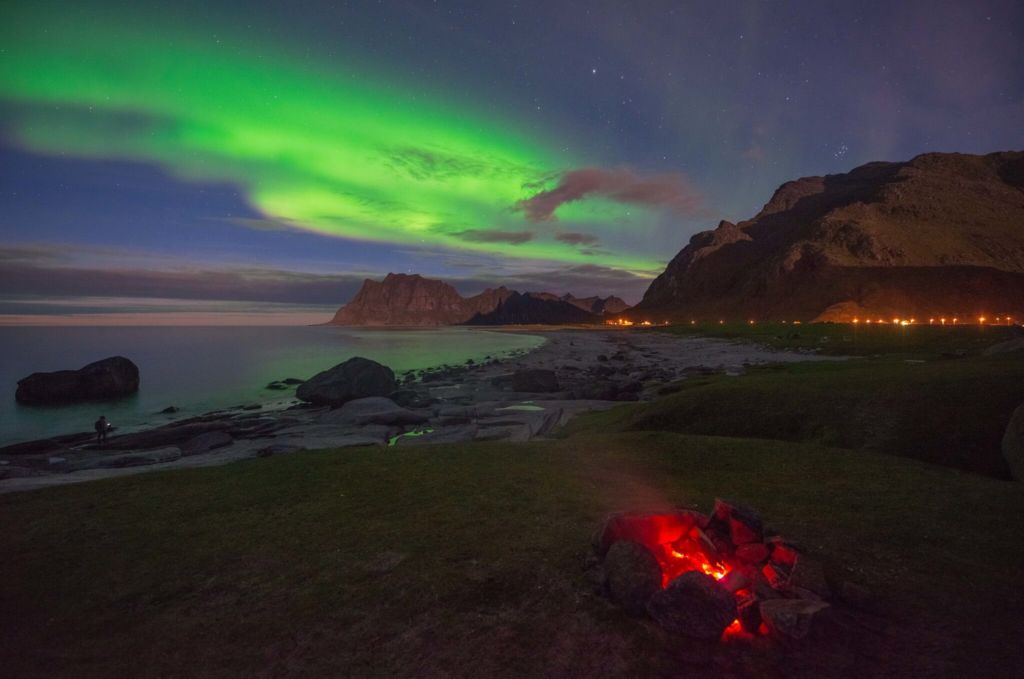
Watching the Northern Lights sitting by the fire? Yes, please!
Table of Content
How to plan a successful Northern Lights (Aurora Borealis) hunting trip
Several factors come into play when planning a Northern Lights trip. All of these factions will influence our chances and possibilities of seeing the lights and planning. All will have to be considered to give ourselves the best chances of seeing them.
- Solar Cycle: the intensity and frequency of the Aurora will vary each year, and this is because of the Sun. Specifically, the Sun’s activity. This activity, known as the Solar Cycle, peaks roughly every 11 years and correlates with the Aurora activity. The more the sun is active, the more chances to see the northern lights. Also, more opportunities to see a strong display. This is good news; the current solar cycle is expected to peak around 2025, so the next few years are potentially great for the Northern Lights.
- Solar weather and KP index: within each solar cycle, we need to look at those solar events that have e the capability to produce intense Aurora Borealis. Coronal Mass Ejections, Solar Flares, and Sun Spots are all events that can send charged particles our way, brought by the solar wind. This is a simplification, but essentially when these charged particles interact with Earth’s Atmosphere, we see the lights. This Geomagnetic activity is measured by the KP Index, or “Planetarishe Kennziffer”, meaning “Planetary Index”. On a scale from 0 to 9, this will tell you the intensity of a Geomagnetic Storm. My favourite resources to check the KP index are this (Geophysical institute of the university of Alaska) and this (Space weather prediction Center) website. The KP index, however, is reliable only in the short term.

Aurora Borealis above a beach in Norway, taken during a KP8 storm.
- Time of the year: any time of the year with enough Darkness in the sky will do. Just remember this: skies have to be dark at night.
- Latitude: This will vary with the intensity of the lights, but generally speaking, they are most common within the 60 and 75 parallels. This area is called the Aurora Oval. You want to be in this zone to see the Aurora Borealis.
- Weather: Last but not least, the weather. The skies will have to be clear. If there is complete cloud cover for the whole night, that will prevent us from seeing anything.
- Light Pollution: get as far from cities, city lights and any for of artificial light as possible. The light shines brighter in the dark!
Here is a short time-lapse. This shows well the progression from a weak display to a very strong one. What you see at the beginning of the video is what could be a KP 2-3 display, ending up to a KP7:
When to see the Northern Lights
One common misconception is that the Northern lights are visible in winter. Technically, the Northern Lights can happen all year round but are only visible when the sky is dark enough.
At those latitudes, within the 60 and 75 parallels, dark enough could be late August/early September until late March or mid-April.
For reasons that are not fully understood – the northern lights seem to be more active around the Equinoxes. This makes the second half of September and the second half of March ideal for Aurora hunting.
Regarding which days are best, you will need to check an Aurora forecast Service and the local weather forecast. The former is to check the light’s expected intensity, and the latter is to find clear skies around you.
My favorite Aurora forecast service is the one from the Geophysical Insitute of the Fairbanks University of Alaska.
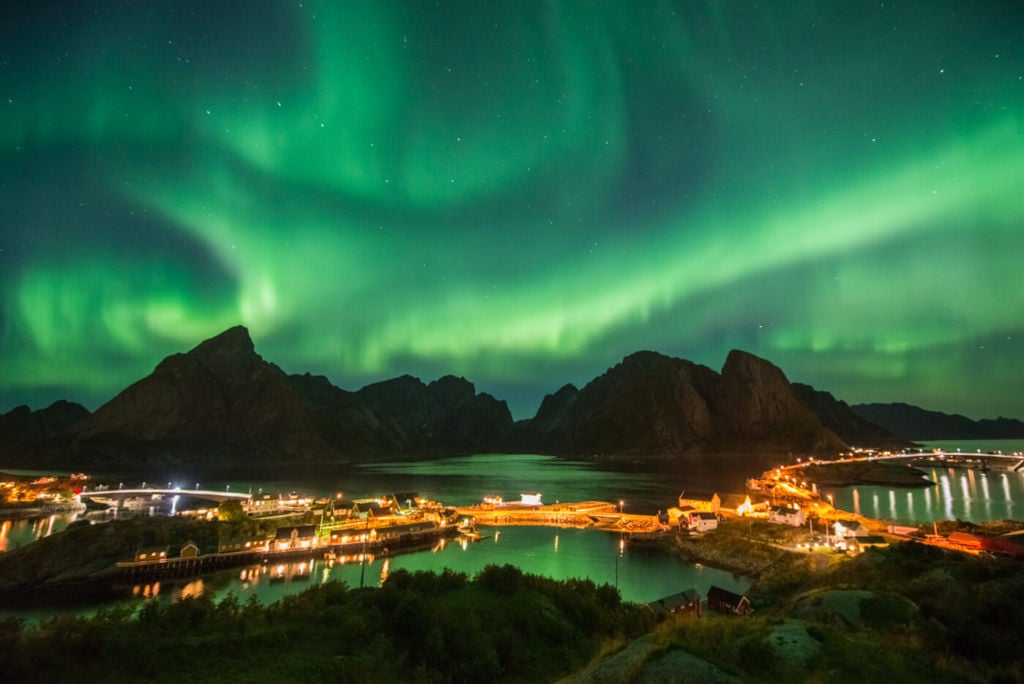
Northern Lights during a KP7 geomagnetic storm. Lofoten Islands, Norway
Where to see the Northern Lights.
Anywhere within or around the Aurora Oval zone area will do. Here again, the website of the Geophysical Insitute of the Fairbanks University of Alaska is the best website to see where the Aurora Oval is located all around the world.
However, the Northern Lights can also be visible at much lower latitudes depending on the intensity. Scotland or the northern part of the Netherlands will see the lights from time to time. This, however, will only happen during very strings Geomagnetic storms, and the lights will only be visible on the horizon to the North. These are rare events that occur maybe once or twice a year, if at all. Not something you can plan a trip on.
Personally, my favorite places Are Northern Norway and Iceland – I have to say, though, I have not had a chance to Travel to Alaska or Canada during winter yet. And if I had to choose a destination for a Northern Lights trip between Iceland and Northern Norway, I would choose Northern Norway.
Here’s why: Iceland is stunningly beautiful, and its landscape is so diverse you never get bored. However, Northern Norway, from The Lofoten to Tromso and above, has a spectacular coastline, dramatic mountains and is better positioned in the Aurora oval. This means more chances to see stronger northern lights displays.
Let it be clear; this is my preference. I just wanted to explain why Northern Norway is currently my favorite destination to change the Northern Lights. Any location within the Aurora Oval will do, so you can pick the one closest to you. I

Northern Lights Above Reine, Lofoten islands
How often can you see the Northern Lights?
Provided the weather is good, the sky is clear, and there is enough solar activity, this could happen literally every night. But, as we have seen earlier, several other factors come into play. All things considered, I would probably say good chances occur every five to six days, usually.
From my experience, on an average of 10-day trips, I have seen the Aurora from one to five times. On one trip in 2021, I saw it once, which was very weak.
On another trip in 2017, I saw it five times; two powerful displays and three average ones. That was a time when the Sun was rather active, and I was lucky enough to witness Aurora displays during a KP8 and KP7 Storm.
Having said that, I’ve heard stories of people not seeing the aurora for two weeks due to bad weather and other factors. Such are the lights, beautiful and elusive!

If the weather is variable, it’s always worth giving it a try. You may get an unexpected break in the clouds!
Northern Lights – What to expect
I will not lie; seeing the Northern lights for the first time can be an emotional experience. Especially If you are lucky enough to see a good, intense display that involves more colors than the typical Green, like Blue, Yellow and Purple.
I often hear “first-timers” screaming in joy and laughter when the Lights appear in the sky. I also vividly remember how excited I was when I saw them for the first time. It was a dream coming true.
On the other hand, if the display is weak, you may have an underwhelming experience. You may think the photos and videos you see online are “photoshopped” or oversaturated and do not reflect reality. Such was my first experience too.
A similar weak display can happen. You will see “washed-out” colors, or you may even mistake the aurora for a thin cloud. These are just low-intensity aurora displays. If you happen to see one, don’t let it discourage you, it’s just a low-intensity display. Keep chasing the lights!

Example of a weak Northern light display. To the eye, this was a little more than a greyish cloud.
Tips to see the Northern Lights – my experience
Personally, my favorite month to go chasing the northern lights is September for a few different reasons. These reasons obviously will apply to any location around the Auroral Oval, so between the 60 and 75 parallels:
- Darkness/Light during the day: I like having a good balance of nighttime and daylight. This allows me to do my hikes during the day and have enough time for the lights at night. So even if the weather is bad on one or two days, I still have options to do something else.
- Weather: September is when the first Autumn storm starts to hit, but it isn’t very cold yet
- Intensity: As mentioned earlier, for some reason, the Aurora seems to be more active around the equinoxes.
- The season: Last but not least, September is when Autumn starts in the Arctic region. It is a short season. The exact start may be a few weeks off from year to year, but that is also when the Autumn colors will appear. To me, that’s an excellent bonus for photography.
- Prices and Crowds: Autumn is technically low season, but the weather is still good. Prices will be lower compared to High Season, and you will avoid the crowds.
To me, this combination of elements is a no-brainer. Perfect conditions for a fantastic Aurora hunting vacation!
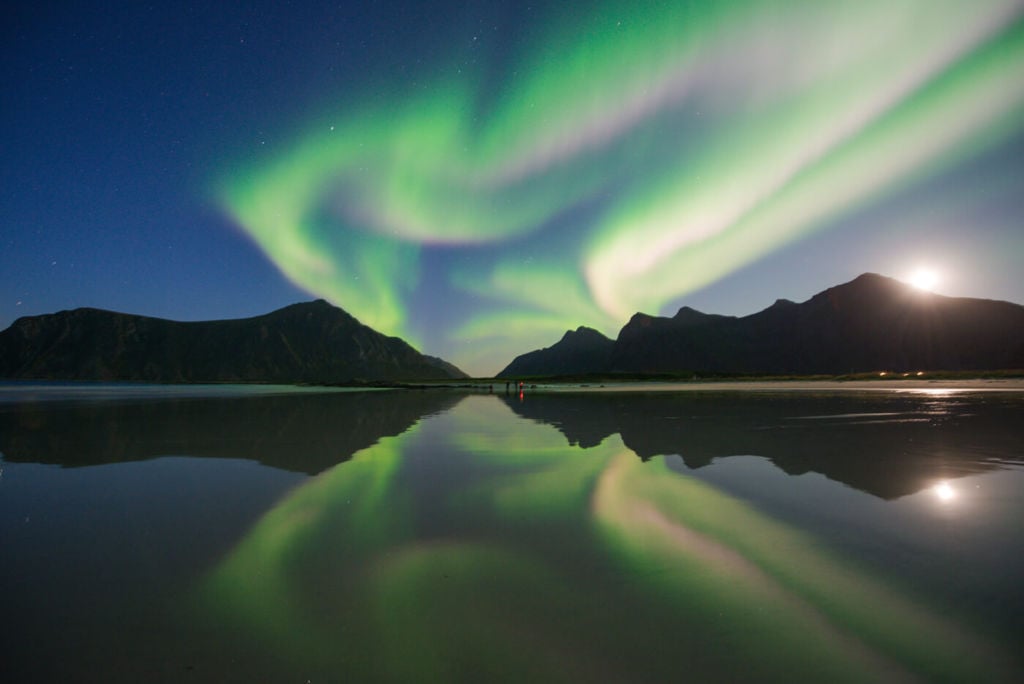
Settings: ISO 200, 3 Seconds exposure at f-2.8. This was taken during a string magnetic storm. Both the ISO and Exposure were too high. As a result, the lights are too blurred.
Conclusion
Here is a small summary of the factors you can control when chasing the Northern Lights:
- Location: Choose it carefully; you want to be in or as close as possible to the Aurora Oval and away from City Lights.
- Check the weather: both the solar Solar Weather and at your location.
- Be patient: this is an elusive phenomenon, but when you see a good display, the reward will be great!
Also, bring a Camera! You can read my guide on How to Photograph the Northern Lights here.
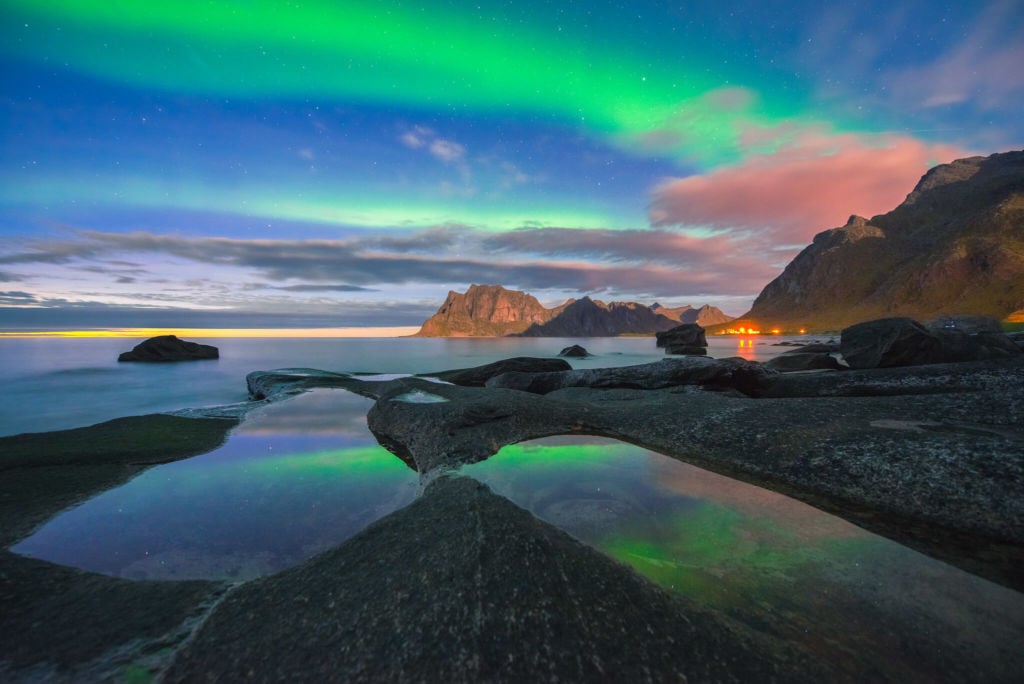
Utakleiv Beach, Lofoten, Norway.
Additional Resources
- if you prefer to join a guided Northern Lights tour, there are plenty of companies or guides offering this service. While I do not organize or sell tours myself, I can recommend searching for one in your area using services like GetYourGuide or Viator.
- Information on the Solar Cycle from the National Weather Service (US) and https://www.swpc.noaa.gov/products/solar-cycle-progression to check its progression.
- Space Weather info here on the Space Weather Prediction Center
- Aurora Forecast: University of Fairbanks
- Article on the Causes of the Northern Lights
- Discover How to Photograph the Northern Lights
I hope you found this post helpful. If you have any questions, comments or feedback, let me know in the Comments section below.
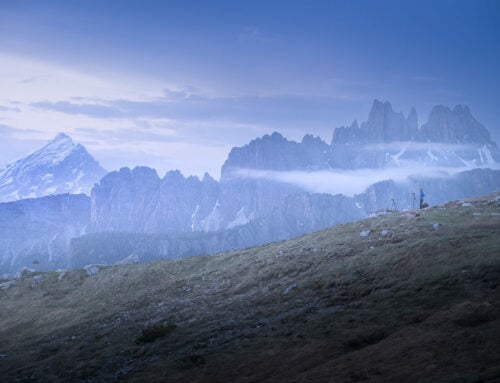
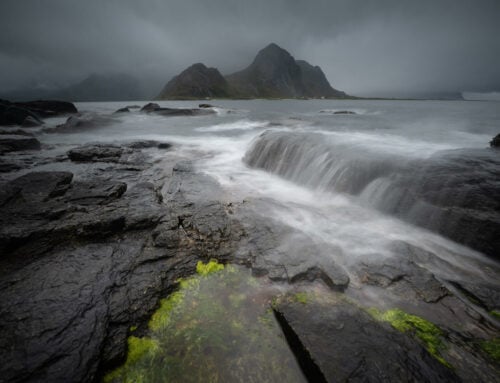
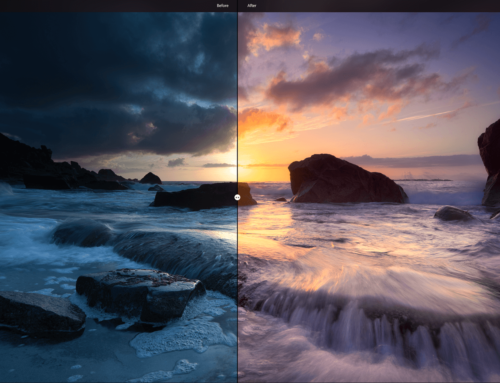
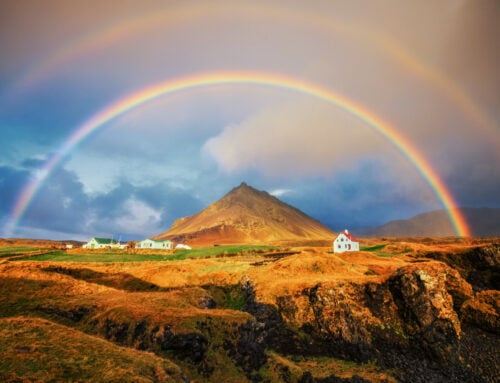
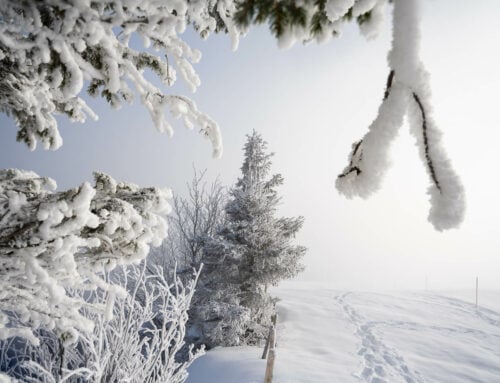
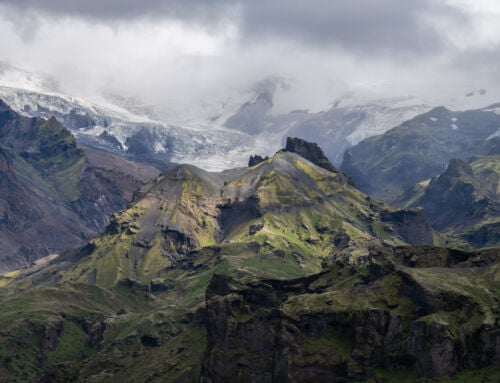
A total outer body experience there is nothing else can attract you into a trance you cannot take your eyes of and simply forget about everything around i would love to see it every day you are in a completely different world.
Thank you
Very informative article. We are going to Fairbanks, AK in late October to chase the Lights. Reading your article, I think we should move the trip back to early October or late Sept. Any thoughts?
Thank you,
Idelle
HI Idelle,
Thanks, and good luck chasing the lights! If it is for the activity around Equinox, yes, the lights seem to be more active around that time of the year. October, statistically, is also a great month. It is still a cosmic game of chance though, depending on weather and solar activity. So I’d also plan around other things that could be done during the day and see what’s best. Cheers and thanks for the visit!
Marco